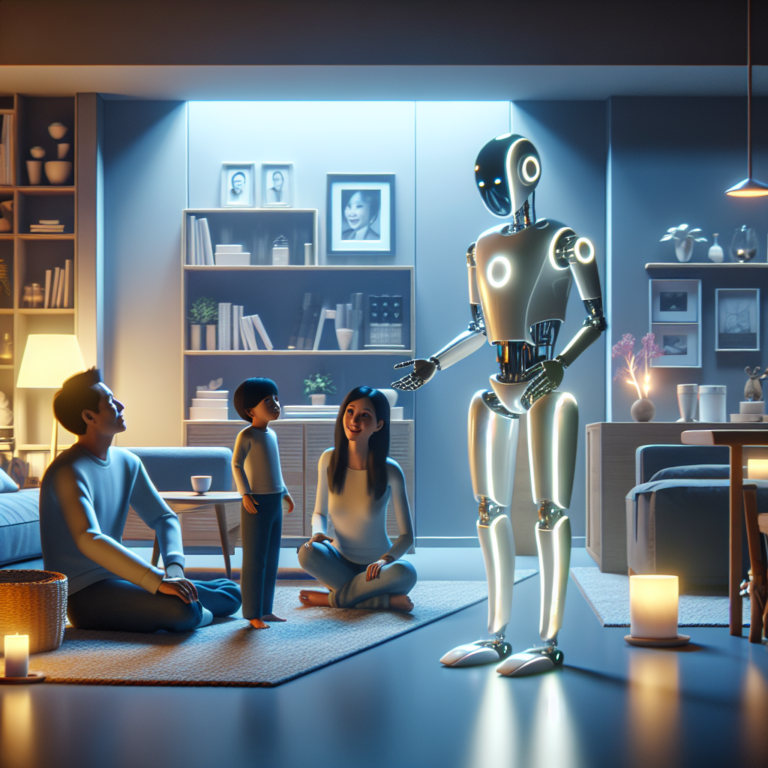Robotic Home Companions: Exploring Apple’s ELEGNT Framework for Enhanced Interactions
Researchers at Apple have made remarkable advancements in developing a framework that improves the interaction between humans and their robotic home companions. Known as the ELEGNT framework, which stands for Expressive and Functional Movement Design, this innovative approach aims to redefine our understanding of robotic assistants. Instead of just being functional, these robots can become emotionally engaging companions, enriching our homes and workplaces.
What is the ELEGNT Framework?
The ELEGNT framework allows non-humanoid robots to display movements that feel more natural and expressive. Unlike traditional robots that focus solely on completing functional tasks, the ELEGNT framework enables robots to convey intentions, emotions, and attitudes through their physical actions. According to Apple’s robotics team, integrating expressive qualities—such as intention, attention, and emotion—is crucial, alongside practical aspects like task efficiency, spatial constraints, and time management.
Testing the Framework with a Lamp-like Robotic Companion
As part of their research, Apple’s team created a lamp-like robotic character, reminiscent of Pixar’s Luxo Jr.. This robot featured a 6-axis robotic arm and a head equipped with both a light and a projector. The team programmed it to execute two types of movements: one serving functional tasks and the other showcasing expressive actions to communicate its internal emotional state.
In a series of user tests involving 21 participants, results indicated a marked improvement in how people engaged with the robot when it used expressive movements. This enhancement was particularly evident during social interactions, such as playing music or engaging in conversation. Interestingly, the expressive movements had less impact when it came to functional tasks like adjusting lighting.
One participant noted, “Without the playfulness, I might find this type of interaction with a robot annoying rather than welcome and engaging.” This highlights how expressive movements can transform potentially intrusive interactions with robotic home companions into enjoyable experiences.
Creating a Movement Vocabulary for Robots
The study highlighted the need to develop a vocabulary of movements for robotic home companions. This vocabulary comprises various gestures and spatial behaviors that elevate the expressiveness of robots. By using these expressive movements, researchers aimed to create a sense of connection between the robot and the people it engages with.
How Age Influences Robot Movement Preferences
Interestingly, research revealed age-related differences in how participants responded to expressive movements made by the robot. Younger individuals generally showed a more positive response, while older participants were less enthusiastic about these movements. This insight suggests that future designs for robotic home companions may need to take into account age-related preferences and customize their behaviors accordingly.
Balancing Functionality and Expressiveness in Robotics
The evolution of robotic home companions is driven by increasing interest from leading tech companies. While current robots, like vacuum cleaners, primarily focus on functional tasks, the ELEGNT framework demonstrates that incorporating natural and expressive movements can make future robots more relatable and endearing.
However, researchers stress that a balance is essential. As one participant observed, “There needs to be a balance between engagement through motion and the speed of task completion; otherwise, the human might grow impatient.” This underscores that while expressiveness improves interaction, it should not compromise a robot’s efficiency in executing tasks.
The Future of Social Robotics
While Apple’s robotics research has often remained confidential, this study offers a peek into its future plans for developing robotic home companions. It signals a paradigm shift in robotics: we must not only focus on what robots can accomplish but also consider how their movements affect human emotions.
As robotic companions transition from factories to homes, their success hinges on their ability to blend into our daily lives. They need to perform tasks efficiently yet also foster a perception of being friendly and approachable companions. The challenge lies in programming robots to recognize and adapt to human emotions, creating a comforting presence rather than a mechanical one.
Apple’s upcoming presentation at the 2025 Designing Interactive Systems conference in Madeira promises to provide further insights into this dynamic field, paving the way for a deeper understanding of robotic companions.
Collaborating for Enhanced Robotics Design
The findings from this research suggest that the future of robotic design will benefit from interdisciplinary collaboration. Input from animators and behavioral psychologists will be crucial, in addition to technical engineering skills. As robots become more integrated into our everyday lives, their movements should feel as natural and relatable as possible. This attention to detail might ultimately decide whether a robot is viewed merely as a gadget or as a valuable companion.
By enhancing how robotic home companions move and interact with humans, companies like Apple can lay the groundwork for a future where these robots are not only effective but also emotionally resonant, enriching our lives in ways yet to be explored. 🤖✨




0 Comments